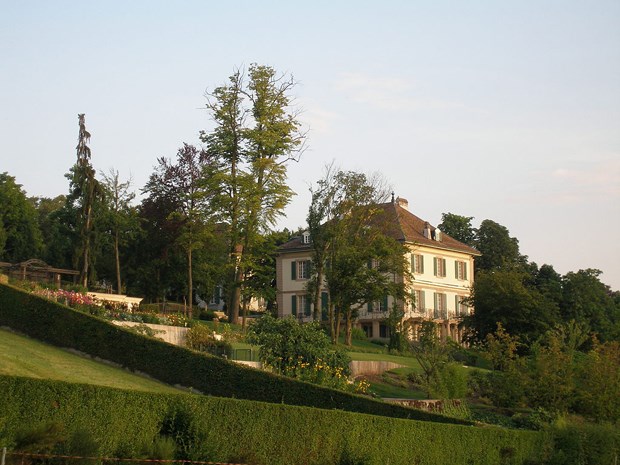10. In June 1816, during the “Year Without a Summer,” Lord Byron hosted a weekend party at his rented Villa Diodati in Lake Geneva attended by friends Mary Wollstonecraft Godwin, her husband-to-be Percy Bysshe Shelley, their companion Claire Clairmont (Mary’s stepsister) and John William Polidori, Byron’s 20-year-old personal physician (http://knarf.english.upenn.edu/Polidori/poldiary.html). Although they did not know it at the time their dreary summer of perpetually cloudy skies and cold temperatures was the result of the largest volcanic eruption in recorded history on April 10, 1815 on Mount Tambora on the island of Sumbawa, Indonesia. Bad weather kept Byron and company indoors where they entertained themselves reading aloud from Fantasmagoriana, a French collection of German horror tales. They also held a competition to see who could write the best ghost story: Mrs. Shelley (as 18-year-old Mary preferred to be called even though she was yet to be married to the already-married Percy) worked on a tale that would become Frankenstein while Polidori began The Vampyre which when it was published a few years later became known as the first modern vampire story. Quite a weekend: http://en.wikipedia.org/wiki/The_Vampyre; http://www.thehistoryblog.com/archives/19782; http://publicdomainreview.org/2014/10/16/the-poet-the-physician-and-the-birth-of-the-modern-vampire/.
9. Agrippa (A book of the Dead), a 300-line semi-autobiographical Duchampian electronic poem by Vancouver cyberpunk novelist William Gibson embedded in a 1992 artist’s book by Dennis Ashbaugh and stored on a 3.5” floppy disk which was programmed to encrypt itself after a single use. Treated with photosensitive chemicals the book‘s pages fade with exposure to light. The conceptual art piece is destroyed as it is consumed.
http://agrippa.english.ucsb.edu/category/the-book-subcategories/the-poem and youtube.com/watch?v=41kZovcyHrU.
8. Chris Rodley‘s 1997 documentary A Very British Psycho connects the dots between two classic slasher films Michael Powell‘s Peeping Tom and Alfred Hitchcock‘s Psycho (youtube.com/watch?v=Ps8H3rg5GfM). The latter film was given its New York premiere in June 1960, two months after Peeping Tom’s premiere in London: criterion.com/films/235-peeping-tom.
7. Charles Baudelaire translates his Baltimore blood brother from the other side of the world — Edgar Allan Poe: http://library.brown.edu/cds/baudelaire/translations1.html.
6. Francesco Goya’s series of eighteen frescoes, known as The Black Paintings, get a virtual tour in the Quinta del Sordo: theartwolf.com/goya_black_paintings.htm
5. Henry James’ brilliant ghost tale The Turn of the Screw cuts deep: newyorker.com/books/page-turner/ever-scarier-on-the-turn-of-the-screw.
4. 1964 was a very good year for Japanese cinema with two classic films, Masaki Kobayashi‘s Kwaidan (youtube.com/watch?v=htCDDztGOrw) and Kaneto Shindo’s Onibaba (youtube.com/watch?v=gn8qAcO1x-A), released to fascinate audiences forevermore.
3. Stanley Kubrick’s delirious cinematic re-telling of Stephen King’s novel The Shining is pitch-perfect with an over-the-top Jack Nicholson in his prime: youtube.com/watch?v=QYrPlGq5O_c.
2. Murnau’s Nosferatu, eine Symphonie des Grauens (translated as Nosferatu: A Symphony of Horror), a 1922 unauthorized adaptation of Bram Stoker‘s Dracula, with names and other details changed because the studio could not obtain the rights to the novel: youtube.com/watch?v=OXHsGhv2JDs.
1. West Vancouver anthropologist-ethnobotanist/UBC prof Wade Davis talks about Looking for Haitian Zombies in a lecture at L.A.’s Annenberg Space for Photography: youtube.com/watch?v=qGq2Bj3FGpc.
Davis’ study of Haitian vodou, The Serpent and the Rainbow, was turned into a Hollywood horror film by Wes Craven (Nightmare on Elm Street) in 1988: youtube.com/watch?v=EPWTvbTWhZc.



